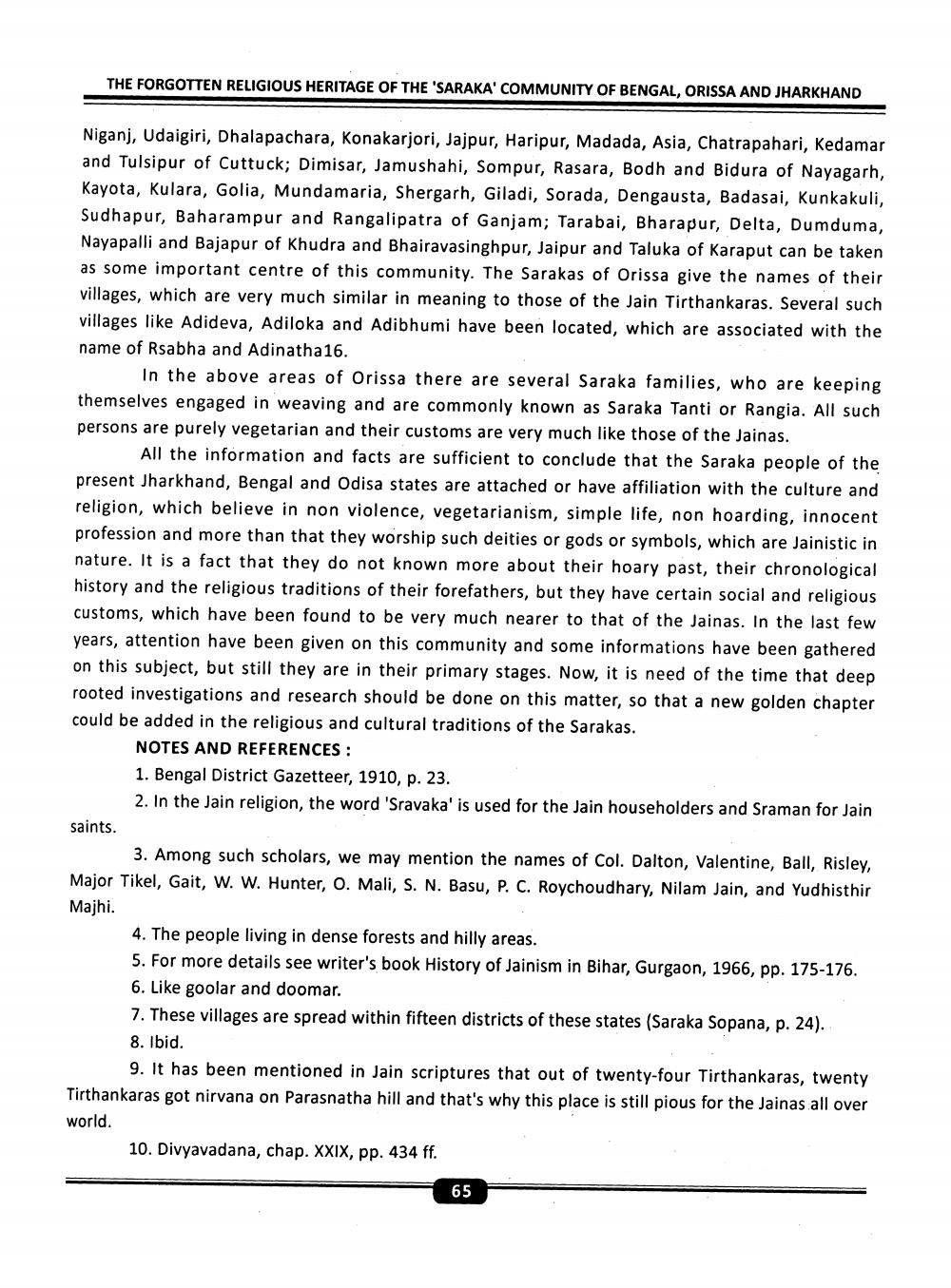________________
THE FORGOTTEN RELIGIOUS HERITAGE OF THE 'SARAKA' COMMUNITY OF BENGAL, ORISSA AND JHARKHAND
Niganj, Udaigiri, Dhalapachara, Konakarjori, Jajpur, Haripur, Madada, Asia, Chatrapahari, Kedamar and Tulsipur of Cuttuck; Dimisar, Jamushahi, Sompur, Rasara, Bodh and Bidura of Nayagarh, Kayota, Kulara, Golia, Mundamaria, Shergarh, Giladi, Sorada, Dengausta, Badasai, Kunkakuli, Sudhapur, Baharampur and Rangalipatra of Ganjam; Tarabai, Bharapur, Delta, Dumduma, Nayapalli and Bajapur of Khudra and Bhairavasinghpur, Jaipur and Taluka of Karaput can be taken as some important centre of this community. The Sarakas of Orissa give the names of their villages, which are very much similar in meaning to those of the Jain Tirthankaras. Several such villages like Adideva, Adiloka and Adibhumi have been located, which are associated with the name of Rsabha and Adinatha16.
In the above areas of Orissa there are several Saraka families, who are keeping themselves engaged in weaving and are commonly known as Saraka Tanti or Rangia. All such persons are purely vegetarian and their customs are very much like those of the Jainas.
All the information and facts are sufficient to conclude that the Saraka people of the present Jharkhand, Bengal and Odisa states are attached or have affiliation with the culture and religion, which believe in non violence, vegetarianism, simple life, non hoarding, innocent profession and more than that they worship such deities or gods or symbols, which are Jainistic in nature. It is a fact that they do not known more about their hoary past, their chronological history and the religious traditions of their forefathers, but they have certain social and religious customs, which have been found to be very much nearer to that of the Jainas. In the last few years, attention have been given on this community and some informations have been gathered on this subject, but still they are in their primary stages. Now, it is need of the time that deep rooted investigations and research should be done on this matter, so that a new golden chapter could be added in the religious and cultural traditions of the Sarakas.
NOTES AND REFERENCES:
saints.
1. Bengal District Gazetteer, 1910, p. 23.
2. In the Jain religion, the word 'Sravaka' is used for the Jain householders and Sraman for Jain
3. Among such scholars, we may mention the names of Col. Dalton, Valentine, Ball, Risley, Major Tikel, Gait, W. W. Hunter, O. Mali, S. N. Basu, P. C. Roychoudhary, Nilam Jain, and Yudhisthir Majhi.
4. The people living in dense forests and hilly areas.
5. For more details see writer's book History of Jainism in Bihar, Gurgaon, 1966, pp. 175-176. 6. Like goolar and doomar.
7. These villages are spread within fifteen districts of these states (Saraka Sopana, p. 24). 8. Ibid.
9. It has been mentioned in Jain scriptures that out of twenty-four Tirthankaras, twenty Tirthankaras got nirvana on Parasnatha hill and that's why this place is still pious for the Jainas all over world.
10. Divyavadana, chap. XXIX, pp. 434 ff.
65




